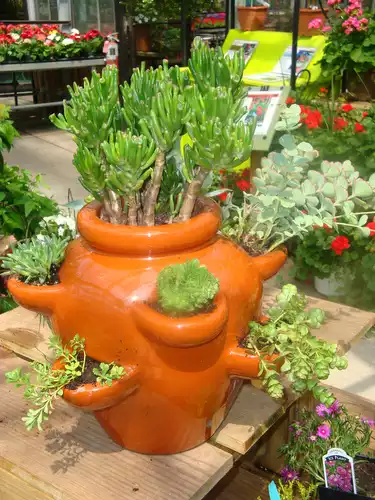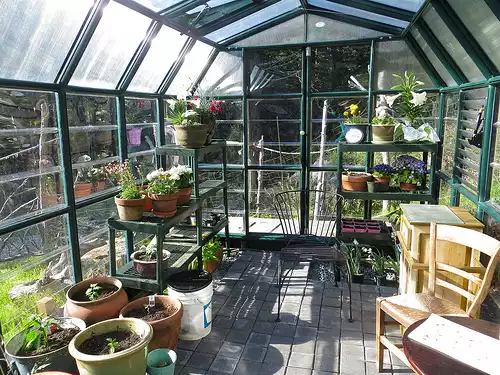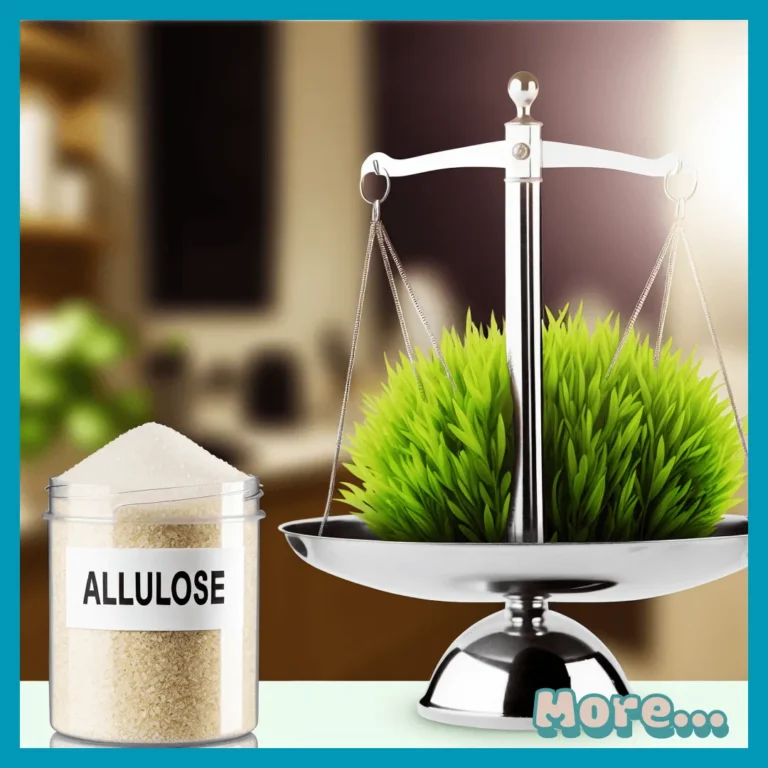Container Gardening Made Easy
Imagine transforming your balcony or patio into an oasis of greenery and blooms, even if you’ve never so much as planted a seed before.
Container gardening presents a delightful opportunity to cultivate your own slice of nature, no matter the size of your outdoor space or level of gardening expertise.
With Container Gardening Made Easy, we’re peeling back the layers of complexity that often intimidate beginners, guiding you through a journey that’s as fulfilling as it is straightforward.
Gone are the days when lack of ground space was an obstacle to growing your favorite flowers, herbs, or even vegetables.
This article promises not only to spark your enthusiasm for container gardening but also to arm you with practical know-how and creative ideas to make the process enjoyable and successful.
Prepare to be encouraged at every turn; whether you have a sprawling porch or just a sunny windowsill, discover how easy and rewarding it is to bring more color and life into your world through the art of container gardening.
Container gardening has become an increasingly popular trend among urban dwellers and those with limited outdoor space.
As more and more people turn to gardening as a way to reconnect with nature and grow their own fresh produce, container gardening has emerged as a convenient and practical solution.
This method involves growing plants, vegetables, and herbs in containers such as pots, buckets, and even old tires.
Not only does it allow individuals to cultivate their own greenery in small spaces, but it also offers a way to beautify balconies, patios, and windowsills.
However, for those who are new to gardening, the idea of growing plants in containers may seem daunting and overwhelming.
Fear not, as this article aims to provide a comprehensive guide on how to start and maintain a successful container garden.
From choosing the right containers and soil to selecting the perfect plants and caring for them, this article will cover all the essentials of container gardening in a simple and easy-to-follow manner.
So, whether you are a city dweller or a gardening enthusiast looking for a new challenge, read on to discover how container gardening can be made easy and enjoyable for everyone.
Table of Contents Container Gardening Made Easy
Maximize small spaces with container gardening
Container gardening is an effective and efficient way to maximize small spaces, allowing individuals with limited outdoor areas to still enjoy the benefits of gardening.
By utilizing containers of various sizes and shapes, it is possible to create a lush and vibrant garden regardless of the available space.
Container gardening offers flexibility and convenience, as these portable planters can be easily moved and rearranged to optimize sunlight exposure and adapt to changing weather conditions.
Additionally, container gardening allows for better control over soil quality, drainage, and pests, ensuring optimal growing conditions for plants.
Whether you have a balcony, patio, or even just a windowsill, container gardening provides a viable solution for cultivating a thriving garden in any small space.
Choose the right containers for success
To achieve success in container gardening, it is crucial to carefully choose the right containers for your plants.
The size and material of the containers play a significant role in the overall health and growth of your plants.
When selecting containers, consider the mature size of the plants you intend to grow to ensure they have sufficient space for their root systems.
Additionally, choose containers with adequate drainage holes to prevent waterlogged soil and root rot.
The material of the containers should be durable and able to withstand outdoor conditions, such as frost and UV exposure.
Plastic, ceramic, and wooden containers are popular choices that offer durability and insulation.
By selecting the right containers, you lay the foundation for a successful container garden that will flourish and bring you joy throughout the growing season.
Selecting the ideal soil mixture
When it comes to container gardening, selecting the ideal soil mixture is essential for providing the necessary nutrients and support for your plants to thrive.
A well-balanced soil mixture will ensure proper drainage, moisture retention, and nutrient availability, promoting healthy root development and overall plant growth.
Start by using a high-quality potting mix specifically formulated for container gardening, as it is designed to provide the right balance of organic matter, perlite or vermiculite for aeration, and moisture retention.
Adding compost or well-rotted manure can further enrich the soil mixture with essential nutrients.
It is important to avoid using garden soil in containers, as it tends to be heavy, compacted, and lacking in the necessary drainage properties.
Regularly monitoring the moisture levels and adjusting the watering schedule accordingly will help maintain the ideal soil moisture for your container plants.
By carefully selecting the ideal soil mixture, you set the stage for healthy and flourishing container gardens that will bring beauty and bounty to your outdoor space.
Picking the perfect plants
When selecting the perfect plants for your container garden, it is important to consider several factors to ensure successful growth and aesthetic appeal.
Begin by assessing the amount of sunlight your container receives throughout the day.
Some plants thrive in full sun, while others prefer partial or even full shade.
Understanding the light requirements of your plants will help you choose the right varieties for your specific location.
Additionally, consider the size and shape of your containers, as certain plants may outgrow smaller pots or have specific root depth requirements.
Pay attention to the climate and weather conditions of your region, selecting plants that are well-suited to thrive in your environment.
Lastly, consider the overall design and color scheme of your container garden.
Combining plants with contrasting textures, heights, and bloom times can create a visually appealing and dynamic display.
By carefully selecting the perfect plants for your container garden, you can create a visually stunning and thriving oasis in any space.
Understanding watering and drainage needs
To ensure the health and vitality of your container garden, it is essential to understand the watering and drainage needs of your plants.
Proper hydration is crucial for plant growth, and each plant has its own specific water requirements.
While some plants prefer consistently moist soil, others may require drier conditions between waterings.
It is important to monitor the moisture levels of your containers regularly and adjust your watering schedule accordingly.
In addition to watering, proper drainage is equally important.
Excess water can lead to root rot and other issues, so it is vital to provide adequate drainage for your containers.
Ensure that each container has drainage holes at the bottom to allow excess water to escape and prevent waterlogged soil.
To optimize watering and drainage, consider using a well-draining potting mix that promotes good airflow around the roots.
This will help prevent water from becoming trapped and allow for healthy root development.
By understanding the unique watering and drainage needs of your plants, you can create an optimal environment for growth and ensure the long-term success of your container garden.
Fertilizing for strong growth
Applying the right fertilizers in a timely manner is key to promoting strong growth in your container garden.
Fertilizers provide essential nutrients that may be lacking in the potting mix, ensuring that your plants have access to the fuel they need to thrive.
When selecting fertilizers, look for a balanced formulation that contains nitrogen, phosphorus, and potassium, as well as trace elements.
These nutrients play crucial roles in supporting root development, promoting leaf growth, and enhancing flower and fruit production.
To fertilize effectively, follow the instructions provided by the manufacturer, as application rates may vary depending on the specific product.
Generally, fertilizers can be applied by sprinkling them on the surface of the soil or by mixing them into the potting mix during planting.
Remember to water your containers thoroughly after fertilizing to aid in nutrient absorption by the roots.
Regular fertilization is recommended throughout the growing season to provide a continuous supply of nutrients to your plants.
However, be cautious not to over-fertilize, as this can lead to chemical burn and damage to your plants.
It is a good practice to monitor your plants for signs of nutrient deficiency or excess and adjust your fertilization schedule accordingly.
By incorporating proper fertilization techniques into your container gardening routine, you can ensure that your plants receive the nourishment they need for robust growth and abundant harvests.
Remember to always follow the specific recommendations for your chosen plants and maintain a balanced approach to fertilization for optimal results.
Controlling pests and diseases
Maintaining a healthy and thriving container garden goes beyond just providing proper nutrition to your plants.
Controlling pests and diseases is an essential aspect of ensuring the longevity and productivity of your garden.
Pests, such as aphids, mites, and snails, can quickly wreak havoc on your plants, while diseases, like powdery mildew and root rot, can gradually weaken and even kill them.
To prevent and manage these issues, it is crucial to regularly inspect your plants for any signs of infestation or disease.
Implementing preventive measures, such as practicing good hygiene, ensuring proper air circulation, and removing any affected plant parts promptly, can significantly reduce the likelihood of pest and disease outbreaks.
In cases where intervention is necessary, organic and chemical control methods are available, including the use of insecticidal soaps, neem oil, and fungicides.
Remember to always follow the instructions provided and consider environmentally friendly options to minimize the impact on beneficial insects and the surrounding ecosystem.
By staying vigilant and taking proactive steps, you can effectively control pests and diseases, safeguarding the health and vitality of your container garden.
Enjoying the fruits of your labor
The true joy of container gardening lies in the ability to enjoy the fruits of your labor.
After weeks of nurturing your plants, watching them grow and thrive, the moment finally arrives when you can harvest the bounty they have produced.
Whether it’s plump, juicy tomatoes, vibrant peppers, or fragrant herbs, the satisfaction of picking your homegrown produce is unparalleled.
Not only does it provide a sense of accomplishment, but it also offers a variety of benefits for you and your family.
The freshness and flavor of homegrown fruits and vegetables are unmatched, elevating your culinary creations to a whole new level.
Additionally, knowing exactly where your food comes from and how it was grown instills a sense of confidence and peace of mind.
So, as you savor the delicious flavors and vibrant colors of your harvest, take a moment to appreciate the remarkable journey from seed to table that container gardening has allowed you to experience.
In conclusion, container gardening is a simple and convenient way for anyone to enjoy the benefits of gardening.
With the right materials, techniques, and a bit of creativity, you can create a beautiful and thriving garden in even the smallest of spaces.
Whether you are a novice gardener or an experienced one, container gardening offers endless possibilities and rewards.
So why not give it a try and start enjoying all the joys and benefits of gardening right at your fingertips.
Happy planting!
FAQ
What are the benefits of container gardening compared to traditional gardening in the ground?
Container gardening offers several benefits compared to traditional ground gardening, including better control over soil quality, easier mobility for repositioning plants, reduced risk of weeds and pests, and the ability to garden in small or limited spaces such as balconies or patios.
Containers also allow for better water management and can extend the growing season by moving plants indoors during colder weather.
Additionally, container gardening can be less physically demanding and more accessible for individuals with limited mobility.
Overall, container gardening is a versatile and convenient option for growing plants in various environments.
What are some easy-to-grow plants that thrive in containers?
Some easy-to-grow plants that thrive in containers include herbs like basil, mint, and parsley, as well as flowers like petunias, marigolds, and geraniums.
Vegetables like cherry tomatoes, peppers, and lettuce also do well in containers.
These plants typically require minimal maintenance and can be grown successfully in small spaces such as balconies or patios.
How can beginners get started with container gardening, even if they have limited space?
Beginners can start container gardening by selecting appropriate containers, choosing the right plants for their space and light conditions, using quality potting soil, and regularly watering and fertilizing their plants.
They can utilize vertical gardening techniques, such as hanging planters or trellises, to maximize space.
Opting for dwarf or compact varieties of plants can also help in limited spaces.
Additionally, starting with a few easy-to-grow herbs or vegetables can be a good way to begin container gardening and gain confidence before expanding to more plants.
What are some important tips for maintaining healthy plants in containers, such as watering and fertilizing?
Water container plants regularly, ensuring the soil is consistently moist but not waterlogged.
Use a well-draining potting mix and water only when the top inch of soil is dry.
Fertilize container plants regularly with a balanced liquid fertilizer to provide essential nutrients but avoid over-fertilizing as it can harm the plants.
Consider the specific needs of each plant species regarding sunlight, temperature, and humidity levels for optimal growth.
Regularly inspect plants for pests, diseases, and root-bound conditions, repotting them as needed.
Prune plants regularly to promote growth and maintain a healthy shape.
Are there any common mistakes that people make when starting a container garden, and how can they be avoided?
Some common mistakes when starting a container garden include using the wrong size pots, over or under-watering, not providing enough sunlight, using poor quality soil, and overcrowding plants.
To avoid these mistakes, choose appropriately sized pots for the plants, ensure proper drainage, water plants as needed, place containers in a sunny location, use high-quality soil, and follow spacing recommendations.
Regular monitoring, research, and adjusting care accordingly will help prevent these common errors and promote a successful container garden.







